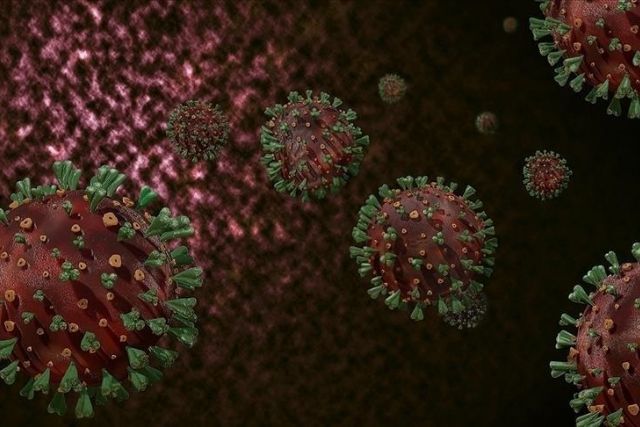OPINION - Bangladesh leading post-COVID recovery conversation, data-driven tech on public health policies
July 15 conference in Dhaka concludes that real-time data-driven modeling will help predict future outbreaks of pandemics

The author is the policy adviser to the a2i program of the government of Bangladesh.
DHAKA, Bangladesh
A landmark international conference led by the Government of Bangladesh was held on July 15, 2021, in Dhaka to look at strengthening government efforts for real-time data capacity with a focus on public health during pandemics like COVID-19.
Many developing countries around the world have successfully implemented data intelligence systems that benefited from addressing the COVID-19 outbreak and installed effective management systems for preparing for future outbreaks. However, the scenario is different for many other countries that couldn't develop the proper data intelligence systems. The high-level virtual event held on July 15 focused on data that informs the process of strengthening and rethinking public health policy in the new normal and featured presentations on working models being used by partners. The event specifically looked at targeted health responses, including management of medical resources and tracking long-term effects of the disease.
Landmark global conference
The objective of the event was to bring governments, development partners, UN entities, the private sector, and academia together to share best practices and exchange views on how to acquire knowledge and tools needed to develop collective data intelligence systems that harness data and technology that can be customized and utilized on a national scale to provide evidence for decision-making, strategizing and ultimately, accelerating COVID-19 recovery.
The historic event was presided by H.E. Mr. Masud Bin Momen, Foreign Secretary (Senior Secretary) of Bangladesh, and Ms. Zuena Aziz, Principal Coordinator (SDG Affairs), and the Prime Minister's Office (PMO) of Bangladesh. It was attended by senior government figures including Dr. Gustavo Martin Rosell De Almeida, Vice Minister of Public Health, Peru; Dr. Frank C.S. Anthony, Minister of Health, Guyana; UN representatives including Ms. Xiaojun Grace Wang, UNOSSC Deputy Director for Programme and Operations; Ms. Jacquelline Fuller; Vice President of Google, and other senior medical professionals including Janet Mucheru, Registrar-General, Civil Registration Services, Kenya, and Dr. Samira Asma, Assistant Director General, Division of Data, Analytics and Delivery for Impact, World Health Organization.
The conference concluded, among other things, that there is the need for establishing a common data-sharing platform; the introduction of global and local data sharing policies; the development of common data collection formats and conventions for recording data and common identifiers such as Unique Property Reference Numbers (UPRNs). Full priorities are listed below.
Participants also analyzed specific case studies and strategy recommendations pertaining to the use of data to help prepare for more targeted health responses, including management of medical resources. The full list of areas discussed is below.
The social and economic restrictions that have been implemented in many countries to control the virus have exposed and exacerbated inequalities. Progress towards the Sustainable Development Goals has stalled, and in some cases may have reversed.
Despite the aforesaid challenges, the Bangladesh government has brought together private sector, civil society, academia, media and development partners from around the world to form an unprecedented partnership and establish a novel, Collective Data Intelligence System for syndromic and mortality surveillance, contact tracing, epidemiological modeling, health response planning, and management.
- Developing countries effectively respond to the pandemic
There are remarkable examples in developing countries that have effectively responded to the pandemic. Rwanda was successful thanks to its pre-existing investments in building a smart data management system; it was able to administer all of the nearly 350,000 vaccine doses it received through the COVAX Facility within two weeks, despite only being given a few days' notice before the doses arrived. Singapore introduced a state-championed, citizen-driven ‘TraceTogether' contact tracing system ‘Aarogya Setu'. This was an Indian invention with open-source COVID–19 contact tracing, syndromic mapping and a self-assessment mobile app that reached more than 100 million installs in 40 days and was lauded by the World Health Organization for helping health departments to identify COVID-19 clusters.
In my country, Bangladesh, our Health Ministry has been using a locally developed, intelligent data dashboard that aggregates, integrates and analyses data from government sources, telecom services providers, NGOs, researchers and journalists to pinpoint geographic locations where disease progression is the fastest to conduct epidemiological analysis and prioritize a medical response resulting in COVID-19 hotspots being identified 7 to 10 days ahead of RT-PCR tests, helping to save lives.
Rapid Total Mortality Surveillance offers hope
Rapid total mortality surveillance offers another example of the useful insights data can yield during the pandemic. In the course of such all-cause mortality analysis, multiple data sources are utilized to measure excess total mortality in 2020 and 2021 compared to the preceding years. The focus on total mortality can also capture the pandemic's indirect mortality burden, which may be caused by disruptions to the access, use and provision of health care services. Data on causes of death can also be mined for confirmatory evidence of the direct and indirect toll in excess mortality associated with the pandemic. In Peru, for example, the National Death Information System (SINADEF) has played an important role in monitoring excess mortality and to track the spread of COVID-19. This electronic system, already in place before the pandemic, enabled Peru to have a clearer understanding of the most affected regions throughout the country.
Beyond COVID-19, the successful deployment of systems that can capture all-cause mortality data can serve as a blueprint for rapid response, such as outbreak response, for countries working with challenges of resource constraints and limited testing capacity. Such challenges can also be addressed with novel data streams and analytics in collaboration with a comprehensive set of partners.
Bangladesh takes bold steps
However, walking the talk will likely be much harder. A case in point is the national ID systems and civil registration and vital statistics (CRVS). Many countries around the world have already been working on these. But despite their well-documented benefits, including more efficient, customized service delivery, emergency relief transfers and potentially forming the basis for shared health records, many countries do not yet have adequate systems in place.
There was consensus among the diverse panel of speakers at the July 15 conference in Bangladesh that real-time data-driven modeling will help predict future outbreaks of diseases and pandemics – and in turn, save lives and the economy.
*Opinions expressed in this article are the author's own and do not necessarily reflect the editorial policy of Anadolu Agency.
Priorities:
1) Establish a common data-sharing platform.
2) Introduce global and local data sharing policies.
3) Develop common data collection formats and conventions for recording data.
4) Introduce common identifiers such as Unique Property Reference Numbers (UPRNs).
5) Shift from silo to whole-of-government approach to generate data as important policy inputs.
6) Develop data analytics platforms for policymakers to facilitate timely interventions by using frontier technologies like Artificial Intelligence, Open Data and Big Data.
7) Develop capacity for intelligent civil registration and generation of vital statistics to develop policy dashboards in crisis.
8) Develop partnerships among technology companies, health care industries to directly support the health care industry, provide information to policy-makers to safeguard communities.
9) Promote South-South knowledge sharing and learning working across borders by sharing best practices to mitigate the spread, coordinate fiscal measures and boost trade.
Areas discussed:
1) Using data to track long-term effects of the disease.
2) Learning from the evolution of administrative data collection systems, such as vital registration systems, as we move towards modernization of all data systems.
3) How modeling can help predict immediate and future developments such as outbreaks of COVID and studying the potential impact of the spread of new variants of the disease, mass movements of people within countries and across borders triggered by outbreaks, natural disasters, major religious festivals, holidays, etc.
4) Rapid total mortality surveillance and resulting excess mortality data to help policymakers overcome the ambiguities of just measuring cases and deaths linked to the infectious disease causing the epidemic.
5) Advocacy efforts to effectively promote the crucial role of leadership, governance and coordination in the CRVS system to ensure that all stakeholders work collaboratively to ensure that everyone is included.
6) Access data for targeting when compiling the country's health and socio-economic response measures during the post–COVID recovery and how to ensure that everyone is included.
7) The role of academia in supporting governments to develop strategies and policies to collect and use data to take timely actions during the post-recovery period of COVID-19.
8) The role of public agencies, the private sector, telecommunication operators and academia working together to mobilize the true potential of the “data revolution” to leave no one behind during the post-COVID-19 recovery.





